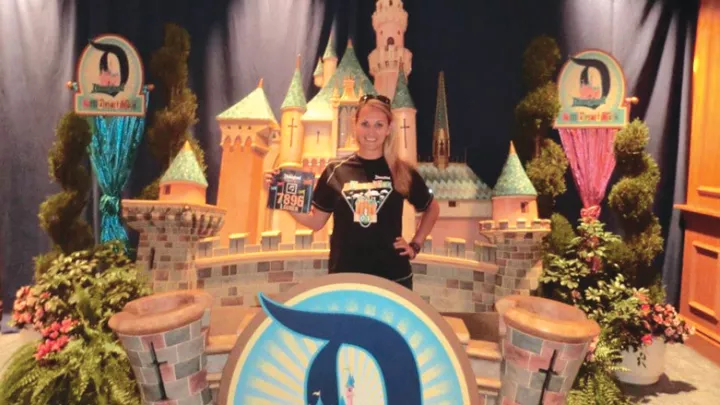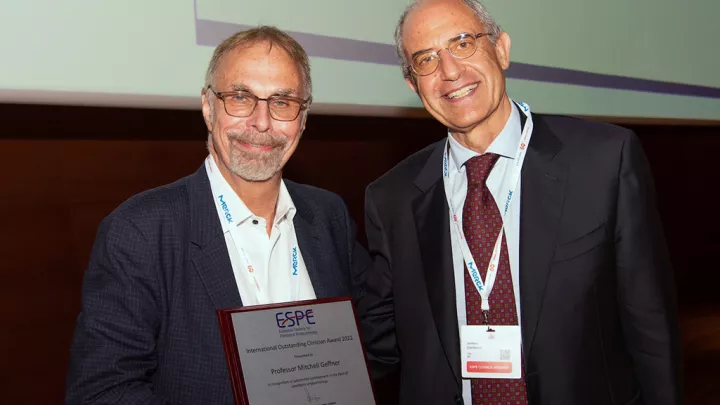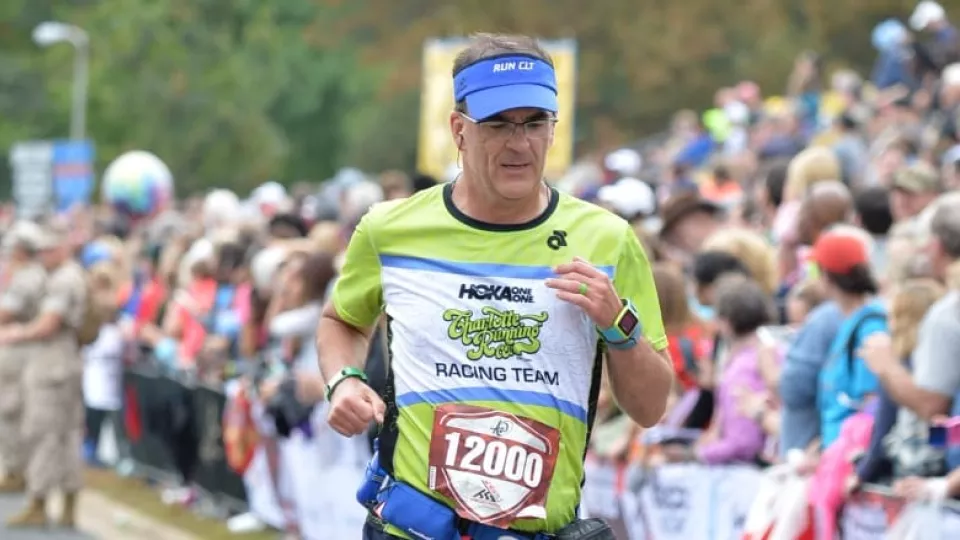
Finding Inspiration from One of CHLA's First Congenital Adrenal Hyperplasia Patient
Brian Hacker had never met anyone else with congenital adrenal hyperplasia, a disease he was diagnosed with when he was just 2 weeks old. That is, not until he came back to visit the hospital that diagnosed him, to volunteer at a camp specifically designed for kids with the disorder.
Rewind to June 2016; Mitchell Geffner, MD, head of the Division of Endocrinology, Diabetes, and Metabolism at Children’s Hospital Los Angeles, received an intriguing email.
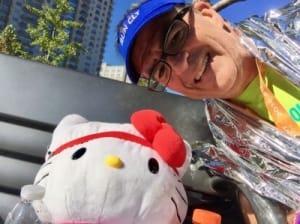
“It was out of the blue. I think he must have had an epiphany,” says Geffner.
“I just wanted to say, ‘This is what I’ve done. This is who I am. Here’s my contact information,’” says Hacker. So who was he?
Brian Hacker actually had a pretty good story to tell. He was one of the first patients at Children’s Hospital Los Angeles treated for congenital adrenal hyperplasia (CAH), a rare disorder that limits the adrenal glands’ ability to make the hormone cortisol. CAH can cause growth and development issues, among other things, and an adrenal crisis may lead to dangerously low levels of sodium and high levels of potassium in the blood, which requires immediate treatment. Without prompt recognition and treatment, shock, coma and even death can ensue.
Today, the disease is treatable, newborns are screened for it, and patients can lead normal lives if they take care of themselves. In 1968, when 2-week-old Hacker was brought to Children’s Hospital Los Angeles by his worried parents, the prognosis was much more of an unknown, and infants could die if the symptoms weren’t recognized in time. Hacker’s pediatrician had referred his parents to CHLA because he knew something was wrong, just not what.
The case was so serious that Hacker was actually given last rites at the hospital.
He was treated by Ann Kershnar, MD, who hadn’t seen CAH before but had read about it and was able to make the diagnosis. With that, treatment was not too difficult; steroid replacement medications had become readily available. But the condition requires careful monitoring, occasional surgical intervention in affected girls, and lifelong medication and vigilant self-care. And so CHLA became a touch point for Hacker’s childhood.
“I remember very much going there for my appointments,” he says.
Otherwise, his childhood was typical. He grew up in Arcadia, California; he played Little League Baseball and youth soccer, and was in the marching band at Arcadia High School. Sometimes, his coaches didn’t understand his disease, which could be dangerous. When people with his type of CAH sweat, they have to be vigilant about replacing lost salt and electrolytes; their bodies can’t do it for them. This makes Hacker’s current obsession a bit more challenging—he’s training for an Ironman competition.
Less salt, more iron
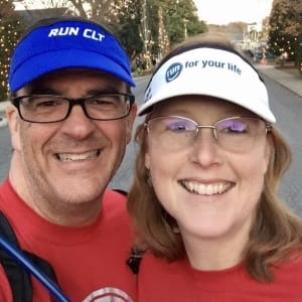
It all started when he and his wife, who now live in Charlotte, North Carolina, got the running bug from one of his daughters, and decided to start training for a marathon. This would be a big deal for a healthy person, let alone someone with CAH. But Hacker was determined. He worked with his local endocrinologist to make sure he could train and compete safely. He always carries water and a sports drink, Endurolyte capsules that replenish electrolytes and sodium, and a syringe and vial of injectable hydrocortisone sodium succinate, in case of an emergency. And then there’s the baggy of pickles.
“Everybody goes, ‘Ewww,’ but don’t say that ‘til you try it,” says Hacker. The pickles are a quick, sodium-boosting snack during runs.
Which brings us back to Hacker’s 2016 email to Mitchell Geffner. Hacker had decided to train for triathlons in pursuit of his ultimate goal: completing an Ironman triathlon (a 2.4-mile swim, 112-mile bike ride and 26.2-mile run) in his 50th year of life. When he thought about it, he realized his story might be able to help kids currently growing up with CAH. So he sent that fateful email to Geffner.
“I was taking a chance on him. But he seemed too good to be true, and he turned out to be everything I thought he was going to be,” says Geffner. Hacker had shared his history and his current situation, with the hope that he would somehow be able to inspire others. And Geffner had the perfect opportunity to do just that.
CHLA’s Division of Endocrinology, Diabetes and Metabolism happened to be putting together its second annual camp specifically for kids with CAH and their families, in conjunction with Painted Turtle Camp, an organization founded by Paul Newman, that works to provide camp experiences for children with special health care needs. Geffner asked Hacker to participate, as a camp counselor of sorts and also as a speaker. He jumped at the chance.
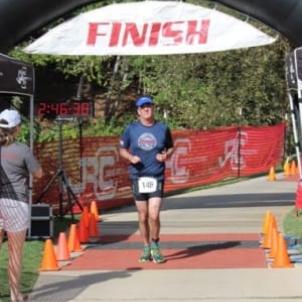
While he was back in L.A. for the camp, Hacker took a tour of the hospital he hadn’t visited for almost 30 years. “So many memories and recognitions came back from that time,” he says. Much had changed, but there were still familiar touches—like the elevators. “It’s the same ding as it was 20-30 years ago.”
At the camp, he was paired with a family, and immediately bonded with them. “The father said, ‘You give me hope,’” he recalls. Hacker also gave a 20-minute speech to the whole group during the weekend.
Geffner says the responses to Hacker’s talk were uniformly positive—the kids and families were awestruck. “‘I wanna be like him’—those kinds of comments.”
“I want families to know that with supervision and awareness you can try to do almost anything,” says Hacker. He achieved his goal with the talk, and then some.
Hacker has now completed a marathon and a triathlon, and is competing in a half-Ironman this September. But he won’t be satisfied until he completes that Ironman. (To be honest, he’s the type of guy who probably won’t be satisfied after that, either.) Perhaps a lifetime of having to go the extra mile—constant visits to the doctor, and always monitoring his energy, his salt levels and his medications—inspired him to take on a LOT of extra miles.
“People ask, ‘Why do you do it?’ Well, it’s there,” he says.
